| Overview: A reversing loop is frequently used by model railroaders to reverse an engine's path on a single main line. The problem with reversing loops crops up when track power is used as they create a short circuit within the track as the loop connects the two rails of the main line. This problem is addressed in a number of ways. The simplest and most common is to completely isolate a section of the reversing loop from the main line. This isolated section must be long enough to accommodate the engine and any cars that might have pickup wheels that feed power to the engine. The isolated section is powered from the main line through a bridge rectifier. This device supplies the same polarity of power regardless of the polarity that is fed into it. When the train has fully entered the reversing loop a reed switch is tripped by a magnet under the engine triggering the controller which throws the DPDT relay reversing the power to the main line so that the train moves in the proper direction upon exiting the reversing loop. An optical sensor can be used in place of the reed relay and magnet with additional circuitry. |
| Layout: The layout is shown here. The crossover
at the left presents no wiring problems and simply changes the
train's direction after it completes the loop.
|
This detail shows the right hand section of the layout.
There are a number of scenarios that must be accommodated:
|

